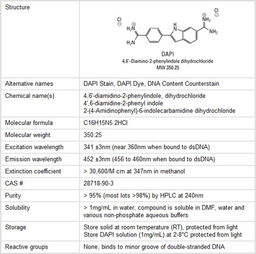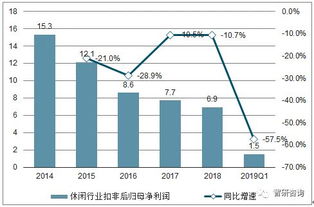The Global Landscape of Textile Anti-Dumping Policies in China
: The Global Landscape of Textile Anti-Dumping Policies in China,Abstract: This paper examines the anti-dumping policies implemented by China in the textile sector, focusing on the evolution and implementation of these policies. It discusses the challenges faced by Chinese textile exporters in countering international anti-dumping measures and the strategies employed to protect their interests. The study also highlights the impact of these policies on China's trade relations with other countries and the broader implications for global trade dynamics.,Key Points:,1. Introduction: The importance of textiles as a significant part of China's economy and its role in global trade.,2. Textile Anti-Dumping Policies: An overview of the various anti-dumping measures taken by China against imports from certain countries.,3. Challenges Faced by Chinese Textile Exporters: Highlighting the difficulties faced by Chinese companies in defending their products against anti-dumping allegations.,4. Strategies Employed: Examining the tactics used by Chinese firms to combat anti-dumping claims and maintain their competitive edge in the global market.,5. Impact on China's Trade Relations: Discussing the effects of these policies on China's bilateral trade relationships with other countries.,6. Global Implications: Outlining the broader implications of China's textile anti-dumping policies for global trade dynamics and the need for cooperation among nations.
Introduction: Textiles, a critical component of global trade, play a significant role in the economic fabric of many countries. However, when imported textiles from other nations are sold at prices below their actual cost, it can lead to unfair competition and damage the domestic industry's competitiveness. This is where anti-dumping measures come into play. In this discussion, we will explore the various aspects of China's textile anti-dumping policies and analyze how they have been implemented to protect domestic industries.
I. Understanding Anti-Dumping Policies Anti-dumping measures refer to government interventions aimed at preventing foreign products from being sold at prices that distort market competition or undermine domestic industries. These policies aim to ensure fair trade practices and protect domestic producers from unfair competition.
II. China's Textile Anti-Dumping Policies China has implemented several anti-dumping measures to protect its textile sector. These include the following:
-
Tariffs: China imposes tariffs on imported textiles that are sold at prices below their actual cost. This is done to prevent foreign companies from exploiting Chinese consumers and undercutting domestic producers.

-
Quotas: China also limits the quantity of imported textiles that can be sold within a certain period. This helps to maintain market equilibrium and prevent oversupply.
-
Restrictions on Trade Barriers: China has imposed restrictions on trade barriers such as customs duties, taxes, and fees related to imported textiles. This aims to prevent foreign companies from using these barriers to gain an unfair advantage over domestic producers.
III. Case Study: China's Anti-Dumping Action Against U.S. Textile Imports In 2015, China took action against U.S. textile imports by imposing tariffs on certain types of apparel imports. This move was part of a broader effort to protect its domestic textile industry from unfair competition. The tariffs were initially set at 15% but later increased to 40%. This move was criticized by some U.S. companies who argued that it was not justified given the small amount of Chinese textile exports compared to the volume of U.S. imports.
IV. Analysis of China's Anti-Dumping Policies The implementation of China's anti-dumping policies has had both positive and negative effects on the domestic textile industry. On the one hand, these policies have helped to protect domestic producers from unfair competition and ensure fair trade practices. They have also contributed to the growth of China's textile industry by encouraging innovation and investment in new technologies.
On the other hand, these policies have raised concerns about trade imbalances between China and other countries. Some argue that imposing tariffs on imported textiles is not a sustainable solution and could lead to increased costs for consumers and businesses. Additionally, some argue that the use of trade barriers against foreign companies can stifle innovation and creativity in the industry.
V. Conclusion In conclusion, China's textile anti-dumping policies have played a crucial role in protecting its domestic textile industry from unfair competition and ensuring fair trade practices. While these policies have had both positive and negative effects, it is important for policymakers to continue monitoring and evaluating them to ensure they remain effective and sustainable. By doing so, China can continue to grow its textile industry while minimizing the negative impacts of anti-dumping measures.
随着国际贸易的不断发展,纺织品反倾销问题日益凸显,我国作为纺织品出口大国,面临着来自国外的贸易壁垒和反倾销压力,本文将围绕我国纺织品反倾销的现状、原因及应对策略展开讨论。

我国纺织品反倾销的现状
- 纺织品出口规模与趋势 近年来,我国纺织品出口持续增长,成为全球纺织品市场的重要力量,随着国际贸易环境的不断变化,纺织品反倾销问题也日益突出。
- 反倾销调查案例 近年来,我国纺织品遭遇了多起反倾销调查,涉及的产品包括棉纱、化纤长丝等,这些反倾销案件涉及到不同地区、不同行业和不同国家。
我国纺织品反倾销的原因
- 国际贸易环境变化 随着全球经济形势的变化,国际贸易环境日趋复杂,各国对贸易保护主义的加强,使得纺织品反倾销问题愈发严重。
- 产业结构调整与转型升级 我国纺织产业正面临转型升级的压力,一些传统产业面临技术升级、产业升级的挑战,一些新兴产业也面临着激烈的竞争和挑战,这些因素都可能导致纺织品反倾销的发生。
我国纺织品反倾销的应对策略
- 加强反倾销预警机制建设 我国应加强反倾销预警机制建设,建立健全的信息收集、分析、预警和应对机制,加强与国际组织的合作,共同应对反倾销问题。
- 优化出口结构与提高产品质量 我国应优化出口结构,提高产品质量和附加值,降低对低附加值产品的依赖,加强技术研发和创新能力,提高产品的国际竞争力。
- 加强国际合作与交流 我国应加强与国际组织的合作与交流,共同应对纺织品反倾销问题,通过加强国际合作,共同制定反倾销规则和标准,促进全球贸易公平、公正和透明。
案例说明
以某地区为例,近年来该地区纺织品的反倾销情况如下:
- 产品情况:该地区出口的棉纱和化纤长丝等产品受到反倾销调查,某品牌棉纱在出口过程中遭遇了国外反倾销调查。
- 调查原因:该地区纺织产业转型升级的压力较大,一些传统产业面临技术升级、产业升级的挑战,新兴产业也面临着激烈的竞争和挑战,这些因素都可能导致纺织品反倾销的发生。
- 应对策略:该地区政府和企业加强了反倾销预警机制建设,优化出口结构与提高产品质量,加强国际合作与交流,政府和企业还积极寻求与国际组织的合作,共同应对纺织品反倾销问题。
我国纺织品反倾销问题日益严重,需要采取有效的应对策略,加强反倾销预警机制建设、优化出口结构与提高产品质量、加强国际合作与交流是当前我国纺织业应对纺织品反倾销问题的关键措施,我国还需要加强技术研发和创新能力,提高产品的国际竞争力。
Articles related to the knowledge points of this article:
Technological Advances in Industrial Fabrication:A Comprehensive Review
Trends in Textile Prices in Tianjin:A Detailed Examination
A Journey Through the Fabric of DreamRuiYi Textiles
Textile Waterproofing Inspection Standards for Quality Control



